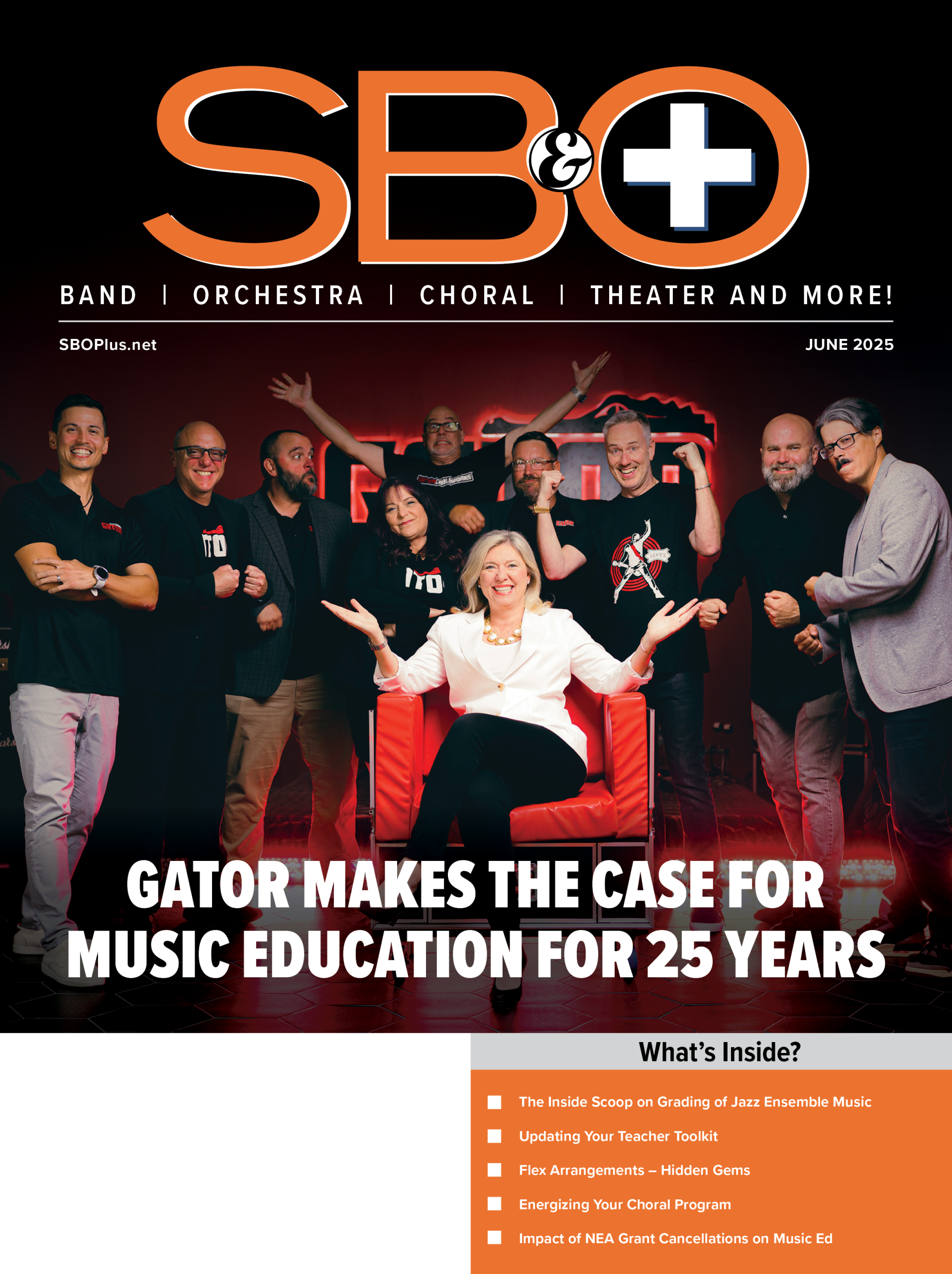As with any other situation in which one must study and prepare to perform under pressure, musicians have many different ways of getting from point A (discovering the timeline and content of the concert) to point B (successfully executing the expected music in a culmination-type experience).
The key word is successfully.
Every fall, I participate in auditions for a non-professional orchestra which has the capability and diversity to represent both the professional and amateur community of Nashville (the Nashville Philharmonic Orchestra). The requirements have changed over the years, as well as the type of auditions and for what one is exactly auditioning.
But there has been one constant — choosing something I feel I can realistically pull off well with the practice time available to me from the instrument’s solo literature.
One would expect standard passage practicing being at the top of the list for preparation. So did I. It is important. However, there is definitely a list from which that type of work is part of the whole. Other study and preparation techniques are just as valuable.
There is possibly no other wisdom that is quite so important to learn and so impossible to teach: skills, knowledge, and experience coming together with one’s behavioral and “work” age. We all have our own personal experience as we find skills to define a work ethic best serving the job. First and foremost, I think we have to figure out an approach to practicing not primarily dependent upon the idea of “practice for the sake of practice.” At some point (in one’s post graduate schedule and life) you will realize that you know what it is you need and what you don’t need to do and practice.
Some of what works is the process in which I prepare. And some, I am sure, is the set of skills which develop within orchestral settings. Experience is not an asset taken lightly in the orchestral circuit.
Individual Study: Preparing for Your Concerts
I decided that presenting a list of all the different ways I know to prepare and learn orchestra music would prove most useful. I will keep within the context of orchestral needs as next month will focus on a chamber music “how-to.”
Using Media/The Internet
In a professional orchestra, it is understood that musicians arrive to the first rehearsal already possessing an intimate understanding of the music as well as the proficiency to play it. It should be part of your preparation to know how the various parts line up (or don’t line up) together; where your part is and what it is doing cannot be overrated.
The first thing I do is listen to an audio recording while watching my part. It is a good way to judge the difficulty; if you cannot keep your place, there is a good chance you will find the concert rhythmically challenging even with a lot of advance work. The first thing you must do is follow along with your part and a recording without losing your place, even once.
After audio comes video. Videos are a good tool for determining style, tempi, nuance, bow articulation, distribution, effect, issues, and traditions. In some cases, the personnel manager or director will post a YouTube video or recording that they want you to be familiar with. This is very helpful; it is expected to be used!
Some things I listen for in the recordings are rhythmic cues I can I can mark in my part. Originally, I would go to the score for this part of the study. I still score-study. I listen first and look second. My eyes are not going to be able to hear the parts I need to while playing. Typically, I will hear something, make note of it, get out the score, and search for those spots’ visual aid. I am generally glad for any assist intended to improve rhythmic or “counting” accuracy.
Have A Solid Numeric System to Use for Fingerings
There are some standard fingering markings every string player should be familiar with; One of my pet peeves is when someone uses roman numerals to indicate the position (for example, IV would indicate to play in fourth position). I see the logic, if not the benefit.
In the standard use of roman numerals (for string players), they indicate the string used. This is quite useful (and necessary) for instances where the fingering could indicate that it is played in a higher position on a lower string, or a lower position on a higher string.
You can see how using it to indicate the position instead of the string could get confusing quickly!
I have a fairly specific system for my fingerings. A number with no other mark will be a reference fingering. If I put a dash in front of the fingering, that indicates a shift. If there is a lot of jumping around in position (indicated to sustain that position, is “restez”), then there are instances where the fingers remain in spot while the bow changes strings. I use a bracket of sorts around those. There are cases where a plus sign in front of the shift is used instead of a dash (not the “x” used for an extensions).
Studying for Orchestra Without Your Instrument
There are so many things one can do to learn and study without getting the violin out of its’ case. Some call for only the bow, some for only the instrument. In this article, I will detail a manner of practicing without using either the bow or the instrument.
Passage Practice with Your Instrument
There are several consistently effective ways to do passage work in general. Usually the part needing attention reads much the same way as an excerpt would… and can be practiced similarly (this is what I mean by the term “passage practice”).
This kind of learning requires endurance and fortitude (focus and control). To get the most out of your practicing, it is wise to intelligently group and organize the passages you are breaking down. We don’t want the brain working against itself on top of all we are requiring of it.
I like to make good use of what I call “joiners.”
There are two basic ways to join selections which have been micromanaged into small units. Joiner notes are the first and last notes of each mini phrase. When those notes are used in both capacities (as the landing note and the originating tone). Using joiner notes is effective prevention or elimination of stutters, hiccups, and most manner of error which are usually responsible for the loss of momentum during play.
The other manner of connecting and organizing miniature phrases or sections…is to have each one overlapping the one before it by a few notes. The ending of the phrases and beginnings are still beginnings and endings. It is merely using larger units of transition (and usually results with increases in practiced material by creating more units).
With a particularly vulnerable section, widen the set of variables you are using to define your phrases. If necessary, creatively pursue what you consider units and patterns and widen the scope of what can define an expressed phrase. If there is absolutely no way you can make sense of the content and intent; fall back on your essential elements of skill on your instrument to find areas of separation in the sound (i.e. bow management).
The overall effect can make those notes into a joint within the body of your part/passages. The specific reward for this kind of attention to your part is a noticeable comfort level when the music is put back together again. It reduces the frequency of mistakes not attributable to: challenging technical requirements, awkward accidentals, extreme tempi, and/or legibility issues with the part itself.
Effective Practice Methods Without Your Instrument
In short, I tap my fingers for rhythm and sing the intervals of pitches and for intervals.
The more involved version: For this exercise, you want your fingers to loosen, but able to articulate such things as offbeat accents in 16th note runs fingers tap with some sort of alternating finger concept that makes sense, but I am not sure what it is at this time, and (no, don’t picture this) I sing with a kind of rhythmic solfeggio which is able to articulate well and also be letting some sound out to reflect the pitches I am hearing in my head.
It is very loosely sight singing.
This is something I actually practice at getting proficient and accurate. With my left hand resting against a surface such as my leg or (really, whatever is comfortable). Sometimes I have my fingers facing up as they would at my instrument, and sometimes I don’t. The idea is to tap everything articulated in the part. You will find yourself putting nuance and body involved movement in the activity after a while – whatever that is – I have discovered that it is similar to how I feel music while I play the work in concert. It was this realization more than practicality that made me think that perhaps I was doing something, “for real.”
General Wellness and Preparing in Non-Musical Ways
We often forget that beyond preparing ourselves musically or professionally, there are unbelievable requirements for the whole thing to go well. I am going to skip most of them. What I would like to make sure does not get left out is, naturally, the salient points that were wanting for improvement on a personal level. When it comes to working weekends in an orchestral setting, it is important to be aware of your exhaustion and your relative ability to relax.
The most important way to prepare your person is to be well-rested and in a generally appropriate frame of mind. Be sure you are hydrated and have eaten what is best for you.
If I had to choose between practice or rest, I started choosing wellness and allow myself to be better equipped to handle what may come.
Some variables in this wellness? Not many.
Have a peaceful and focused frame of mind.
Adequate sleep leading to up departure time. I may not rest well in hotels, but I can attempt to arrive fresh. Falling asleep at the wheel is life or death. I’m not sure if falling asleep on stage is or not. Sleeping through a concert? Difficult to come back from.
Be aware of your nutrition and dietary preferences, needs, or concert-weekend specific tried and true meals/foods. Be in control of your ability to secure what you need to sustain yourself; don’t leave it up to chance.
Asking for rides is o.k.; but you don’t want to make a habit of your ability to secure adequate meals becomes dependent on the good moods of your colleagues.
Good moods are not a reliable constant of musicians and their rehearsals.
Before ending this, I would like to list one more thing in that same category of importance. You know how much personal space you need and when you need it. It takes perseverance to continue caring with such high levels for so long.


























